5 Recruitment Funnel Metrics to Boost Your Talent Acquisition Strategy
.png)
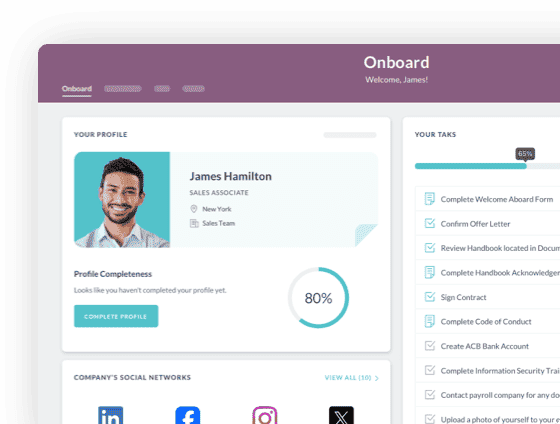
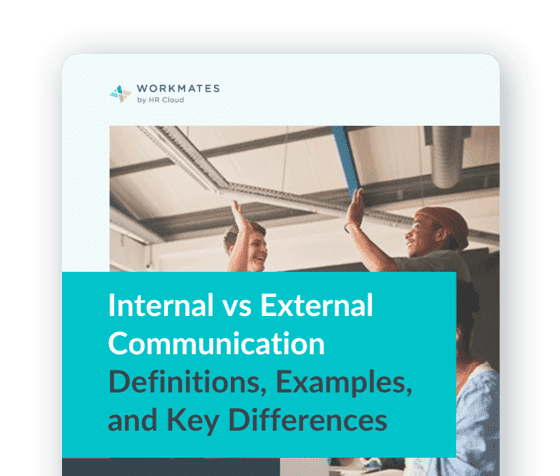
 Cut onboarding time
by 60%—here's the
Ultimate Checklist
that helped do it.
Cut onboarding time
by 60%—here's the
Ultimate Checklist
that helped do it.
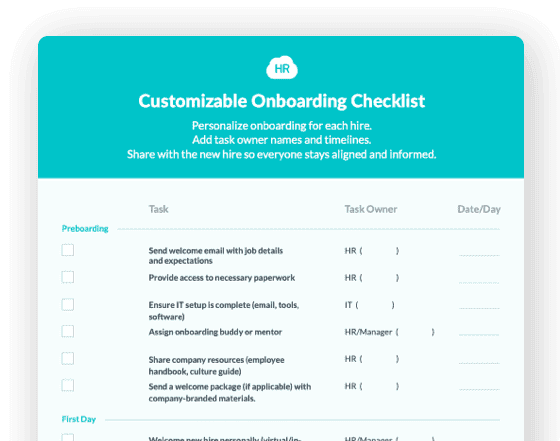
Talent acquisition is one of the most important aspects of any business - after all, ensuring that your business is filled with excellent employees is one of the best ways to build your business and develop profits. However, more and more business owners are finding that the talent acquisition process has become increasingly complicated with the advent of the digital age. In this article, we highlight 5 recruiting funnel metrics that can help you boost your talent acquisition efforts and improve your overall recruitment funnel effectiveness.
What is a Recruitment Funnel?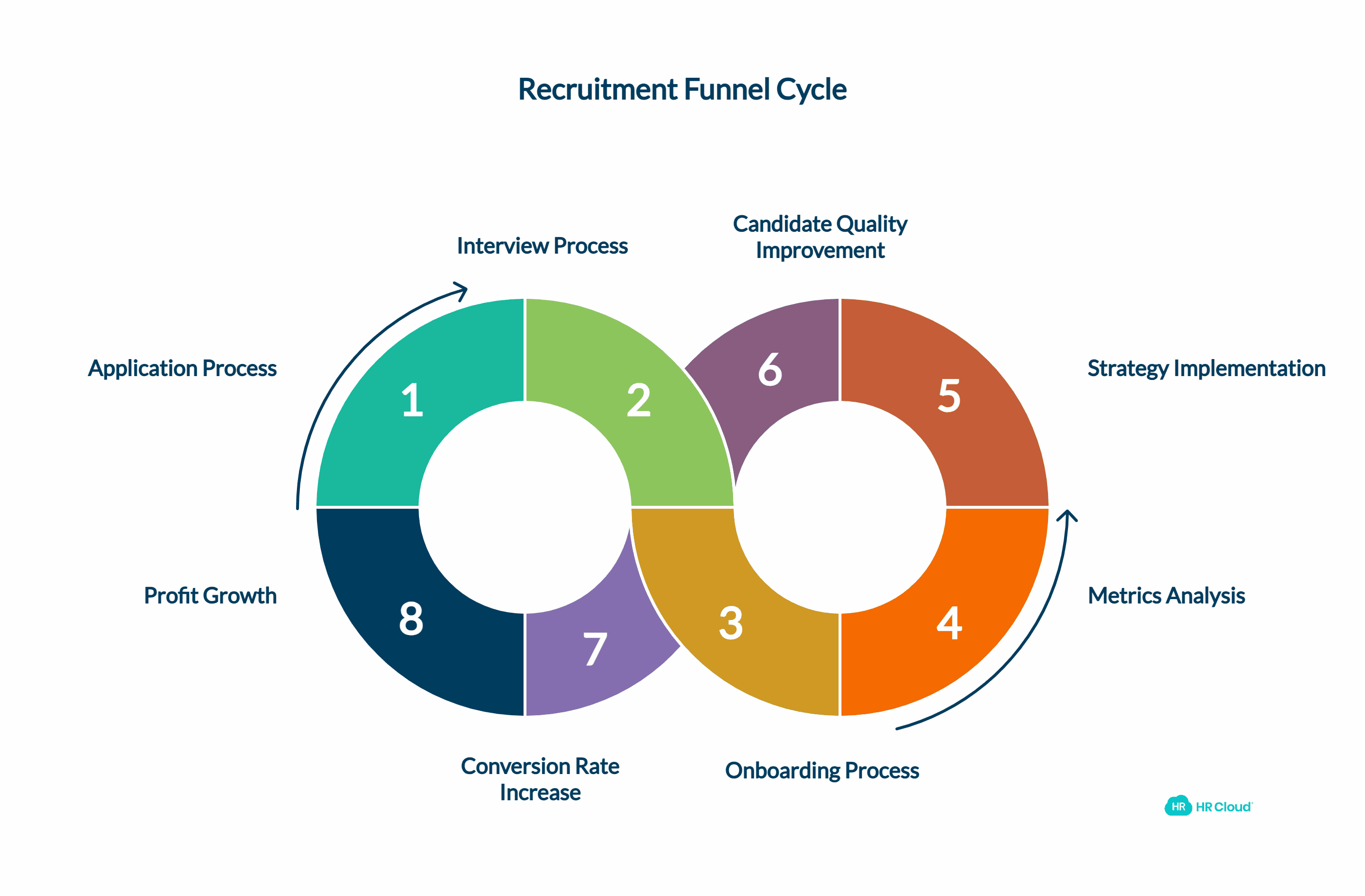
A recruitment funnel, also known as a recruiting funnel, describes the systems and structures that businesses have put in place in order to recruit new employees. The details of a recruitment or hiring funnel will differ from business to business due to the differing requirements of each industry.
Some businesses will have lots of departments involved, whereas small businesses may only have a small number of employees working on the recruitment funnel at any one time.
The recruitment funnel covers the application, interview, and onboarding processes.
How do Recruitment Funnel Metrics Help?
Recruitment funnel metrics are crucial for businesses that want to review and optimize their recruitment processes due to the fact that they provide useful overviews of various aspects of the recruitment funnel.
By including several recruitment metrics examples in a given analysis, businesses are able to see which areas they need to improve in and chart the impacts of new recruitment strategies.
In short, recruitment funnel metrics are an essential tool as they enable businesses to make informed decisions - without metrics, every change that is made to the recruitment process is a shot in the dark.
By leveraging recruitment data, businesses can better predict and react to any potential issues with the hiring funnel process, as well as drive more qualified top candidates to open roles.
Ultimately, quality candidates lead to higher conversion rates, greater profits, and a better lead generation funnel, so it's worth making the effort to drive them to your business.
5 Recruitment Funnel Metrics for Boosting Your Talent Acquisition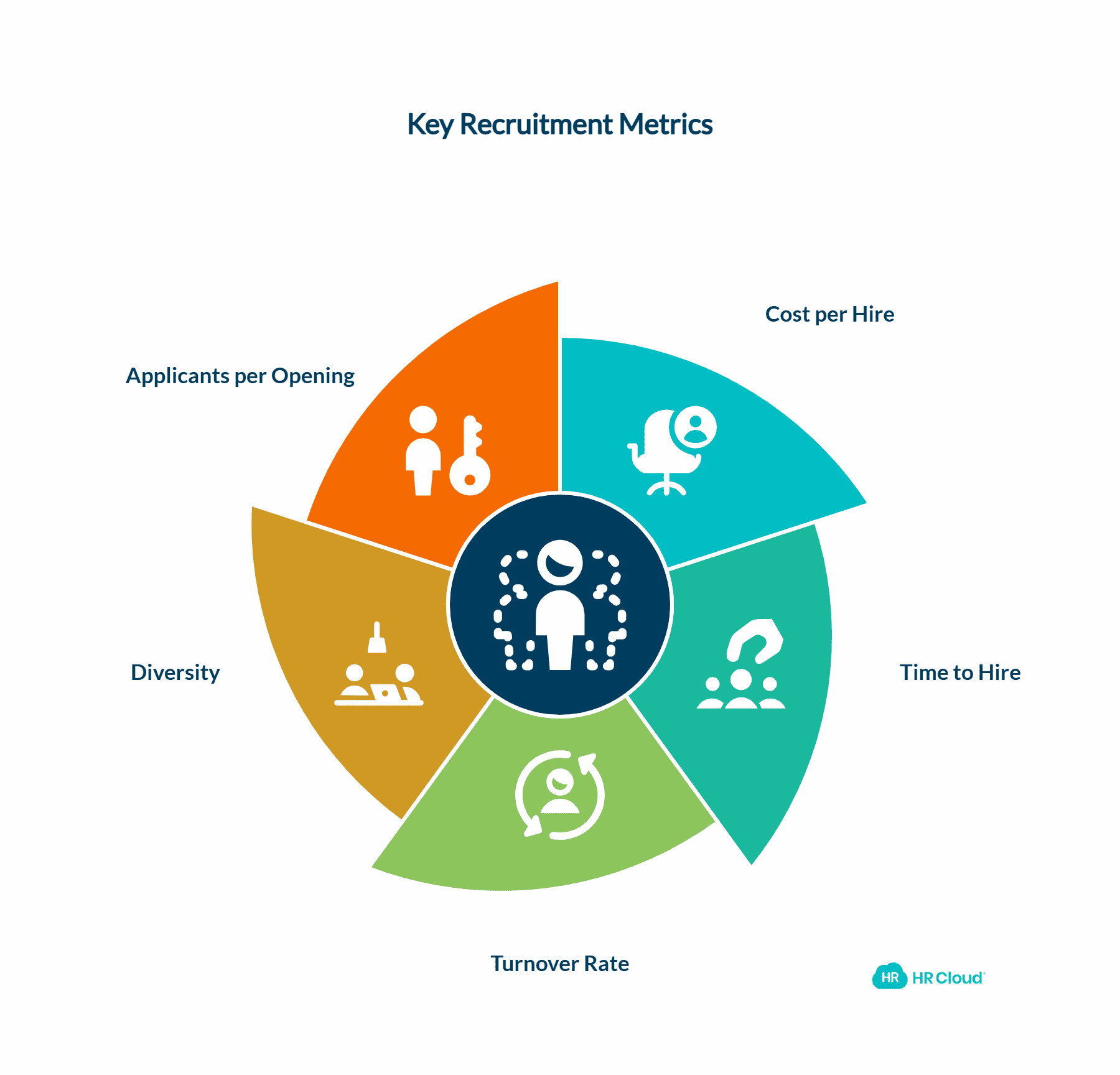
Now that we know what a recruitment funnel is and how metrics can help businesses optimize results, it's time to take a look at some of the most useful metrics for boosting talent acquisition.
1. Cost per Hire
The cost-per-hire metric is extremely useful for businesses that want to get a handle on how much money each individual hire costs. This is particularly useful, as it enables businesses to measure the changes to the cost per hire as they implement changes to improve other metrics.
For example, if a business decides that it needs to increase the number of new hires and invests in expanding the recruitment process, it would be important to keep an eye on the cost per hire to make sure that the hiring process remains as efficient as it was before.
This is crucial, as if every new hire costs twice as much under the expanded hiring funnel as they did previously, then the business may have actually hurt its recruiting efficiency. By keeping an eye on cost per hire, businesses are able to ensure that they don't overextend their recruitment funnels and end up hurting profits.
2. Time to Hire
This metric is important for understanding how effective your recruitment funnel is at finding new employees. An excessively high time per hire metric means that a business will inevitably be spending more money than is necessary on the hiring process.
This is because the longer a hire takes, the more money needs to be spent on advertising costs and wages for people working in your recruitment team. By shortening the average time it takes to hire, businesses can look to keep recruitment costs down and begin remedying the loss of profits due to an unfilled position.
This is especially true for businesses in sectors with a high turnover rate like the hospitality sector - for these businesses, a quick and efficient time-to-hire metric is absolutely essential for keeping profits up, particularly during busy periods of the year such as the Christmas holidays or Summer.
A high time per hire metric suggests that a given business is failing to advertise its job listings in the appropriate places or that the job posting itself is poorly worded. If you see an increase in your own time-to-hire metrics, it might be time to consider overhauling your talent strategy framework to ensure your job adverts are getting the right kind of attention from qualified applicants. Improving hiring process efficiency can significantly impact your overall recruitment efficiency.
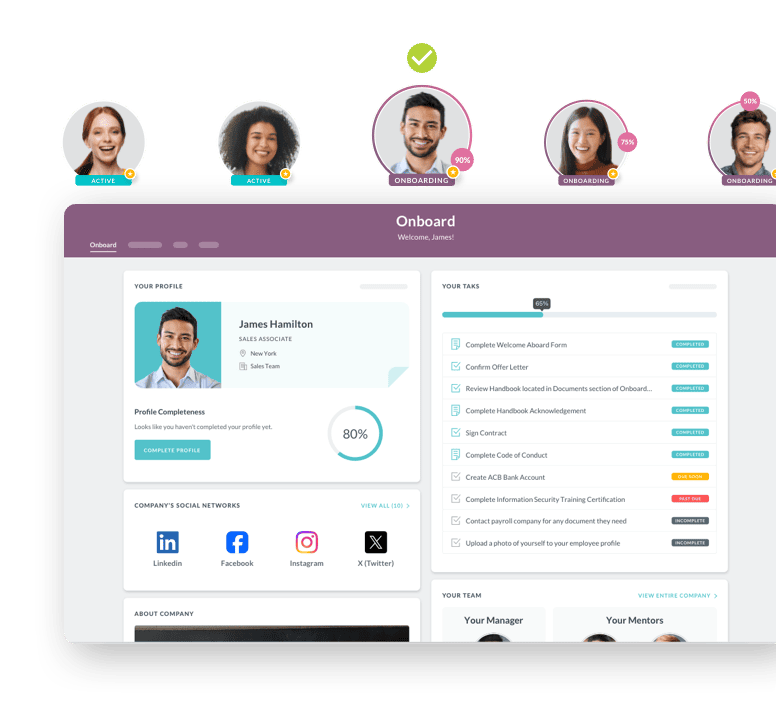
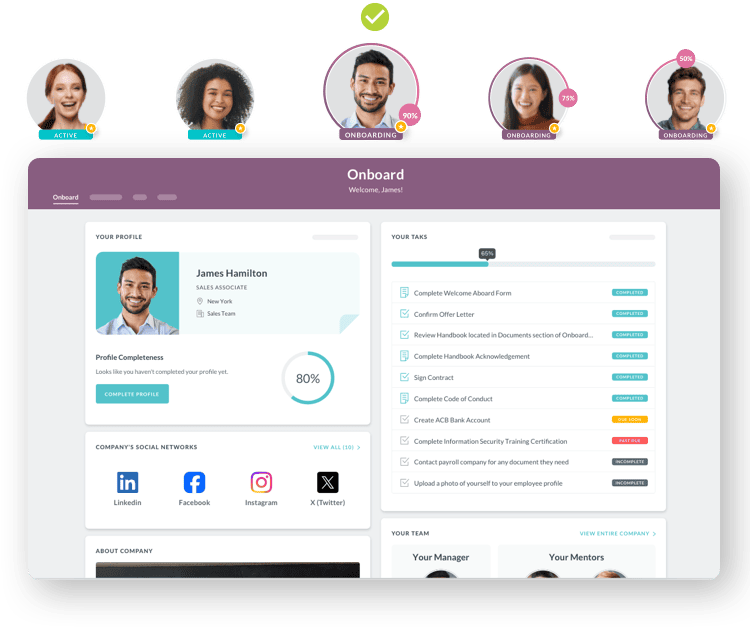
3. Turnover Rate
Another important metric is the employee turnover rate. As mentioned previously, some industries have higher turnover rates than others, so acceptable figures for turnover rates will vary - however, as a rule of thumb, businesses with higher turnover rates tend to see a dip in profits and standards.
This is primarily due to a loss of profits from unfilled positions and the loss of experience and expertise. However, high turnover rates can also point to poor managerial practices, a difficult work environment, or an insufficient interview process that fails to create the right expectations in the candidate's mind.
By checking the turnover rate, business owners can get a rough sense of how happy their employees are and how successful the onboarding experience is. If the turnover rate is too high, it might be a good idea to think about strategies for creating a positive office environment and a healthy management structure. This is where hiring manager accountability comes into play, as they play a crucial role in employee retention and satisfaction.
4. Diversity
Diversity is an important factor in hiring, especially in multicultural societies. By ensuring that your business hiring practices align with your diversity index, you can be confident that your workplace is both representative and fair to candidates from all backgrounds.
A diversity index can be calculated by finding the population figures in your area for each ethnicity. You can also use applicant tracking systems to filter applications by diversity data such as gender, sexual orientation, ethnicity, and disability status.
By making your business more representative, you can help to create a positive work culture that effectively motivates your employees by letting them know that they are valued and accepted. This is excellent for improving recruitment and retention in a tight labor market. Representative businesses can also generate more applications per opening due to a reputation for diversity and inclusion, helping to drive recruitment funnel results in the process. The recruitment yield ratio can be a useful metric to track the success of your diversity initiatives.
5. Applicants per Opening
The final metric considered here is the number of applications received for each opening. This metric focuses on the efficacy and attractiveness of job postings and job listing sites, which is crucial for businesses that are looking to increase the number of potential candidates that they receive. There is a need for caution with this metric, however, as businesses will want to receive more applications from quality potential candidates rather than simply receiving more applications.
Businesses that concentrate too much on this metric may find that their turnover rate increases due to the fact that they have lowered the threshold for hiring in order to increase the number of applications. This could lead to a smaller number of quality candidates, leading to potential issues with job dissatisfaction and quality control that can cost businesses profits further down the line. It's important to analyze your recruitment channel performance to ensure you're attracting the right candidates through the right channels.
Final Thoughts
Overall, businesses that are looking to improve their recruitment results need to keep a keen eye on their recruitment metrics. These will chart the successes and failures of their recruitment strategy over time, from the application process to onboarding new hires. Without metrics, it can be extremely difficult to get precise appraisals of specific aspects of the business.
Spend time looking through your metrics in order to get an accurate picture of the recruitment process.
-
High turnover rates and low diversity? Make sure to improve your business culture to attract more employees.
-
High cost and time per hire? Look to make your recruitment funnel more efficient and think about where the best places to advertise your openings are.
By listening to the data, business owners can greatly boost the number of quality acquisitions driven through the recruitment funnel - a major asset for any business. Additionally, consider tracking other important metrics such as offer acceptance rate and application completion rate to gain a more comprehensive view of your recruitment funnel's effectiveness.
 Discover how our HR solutions streamline onboarding, boost employee engagement, and simplify HR management
Discover how our HR solutions streamline onboarding, boost employee engagement, and simplify HR management

Keep Reading
Applicant Tracking System (ATS): Complete Buyer's Guide 2026 — How to Choose, Compare & Implement the Right ATS
The enterprise ATS market reached $2.9 billion in 2024, yet 60% of companies are still
Specialized Onboarding Software for Healthcare to Reduce Admin Work and Scale Hiring Fast
Imagine this: a women’s health clinic hires two new nurses, only to lose both within
A Closer Look at HR Cloud-ADP Integrations
ADP is the gold standard for payroll and core HR management. But if you’ve ever tried to
Like What You Hear?
We'd love to chat with you more about how HR Cloud® can support your business's HR needs. Book Your Free Demo

Build a Culture of Recognition. Boost Engagement. Guaranteed.
Workmates empowers employees to stay informed, connected, and appreciated—whether they’re on the front line, in the office, or remote. Recognition drives 12x higher engagement.Trusted by industry leaders in every sector




Cut Onboarding Costs by 60%.
Take the confusion and follow-ups out of onboarding with automated workflows, digital forms, and structured portals—so new hires ramp faster 3X quicker.Trusted by industry leaders in every sector




